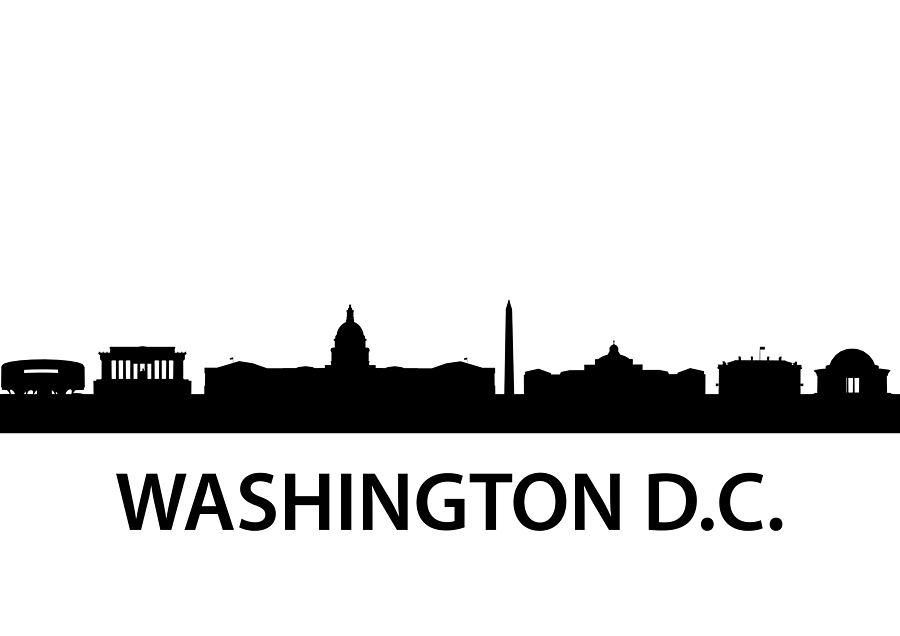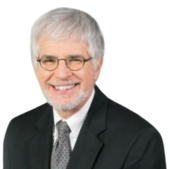
In June 2002, I interviewed Peter Drucker in Los Angeles for a USA TODAY feature story, the evening before he gave the keynote address the following morning at the Special Libraries Association annual conference.
When I mentioned to him that I lived in the Washington, D.C. area, he said that he would be traveling there soon, but that he was “sworn to secrecy” as to what it was about, or where in the area he would be. Later that month it was announced by the White House that Drucker would be one of the recipients of that year’s Presidential Medal of Freedom, the nation’s highest civilian honor. He was presented the award at the White House on July 9, 2002.
That was hardly the only D.C. connection for Drucker, who was often here during the 1940s, not long after he immigrated to the United States in 1937 and settled in New York City. As told in his 1978 charming memoir Adventures of a Bystander, his parents came from Austria to live in the United States, and eventually settled in D.C., where his father Adolph Bertram Drucker became a professor at The American University (my undergraduate alma mater).
Peter Drucker became a civilian consultant to the U.S. Army in World War II, as related by William Cohen, his first Ph.D. student at Claremont Graduate University in the 1970s, and the author of a number of insightful books about him.
Drucker’s relationship with the D.C. area continued well beyond the 1940s. Let’s take a virtual tour of Drucker’s footsteps:
After teaching at the University of North Carolina when he first came to the United States in 1938, Drucker’s father Adolph Bertram Drucker later became a professor at American University. In Adventures of a Bystander, Drucker writes on page 257: “My parents, who had managed to get out of Austria a step ahead of Hitler’s Secret Police, had joined the family (my brother was now a physician in the state of Washington) in the United States in the fall of 1938, and my father began to teach international economics at Chapel Hill in North Carolina. In 1941, at age sixty-five, he moved to Washington, D.C., where he continued to teach at American University but also worked with the U.S. Tariff Commission on European economic reconstruction.”
As I wrote in my 2022 Psychology Today blog post Peter Drucker and Japanese Art: Scholar in a Landscape, “While working in Washington, D.C. during World War II, Drucker had a lunch hour ritual: studying works of Japanese art at The Smithsonian’s Freer Gallery of Art, on the National Mall. In 1999, as he was turning 90, he recalled that the museum staff was “awfully kind to me and gave me a table downstairs in the stacks and let me look at paintings that restored my sanity.”
Drucker conducted a longstanding series of lectures for GWU’s Continuing Engineering Education Program; twice a year, once in D.C. and once in a studio in Ontario, California. The latter events would be shown to an audience in D.C. via satellite. I was fortunate to see one of his all day lectures at GWU in 1994, and another on satellite later that year.
Also on page 257 of Adventures of a Bystander, Drucker writes, “And since my parents had a spacious apartment in Georgetown and my brother and I had been foresighted enough to give them one of the brand-new window air conditioners for their bedroom when they moved from North Carolina in the summer of 1941, I enjoyed the rarest of all luxuries in wartime Washington: a quiet, air-conditioned place of my own whenever I went down.”
As mentioned above, Drucker often visited the Freer Gallery on the Mall during World War II. And he very likely visited the Smithsonian, the National Gallery of Art (there was only one building in those days), and other attractions on the Mall. I don’t know exactly where in the Mall area he worked for the Army, or if he might have also worked on some occasions across the Potomac river at the Pentagon.
Although it is conceivable that he could have driven (or even taken a plane) to D.C. from New York, my conjecture is that he probably traveled by train. He also references a train trip from Washington to New York on page 299 of Adventures of a Bystander.
Drucker writes about his 1938 foreign correspondent freelancing for The Washington Post on pages 297-8 of Adventures of a Bystander. I also wrote about it in Peter Drucker and The Washington Post in 2013 and Peter Drucker and Freelance Writing, a Psychology Today blog post in 2023. The Post moved to a new headquarters building in 2015.
The awarding of the Presidential Medal of Freedom by President George W. Bush in 2002 was unlikely to have been the only time Drucker visited the White House. For instance, the Drucker Archives has a letter dated February 23, 1965 from President Lyndon B. Johnson to Drucker, then living in Montclair, New Jersey: “Dear Mr. Drucker: I understand you have been invited to serve as a member of the National Citizens Commission to support International Cooperation Year. I just want to let you know that I will be personally grateful to you for lending your influential support. Sincerely, Lyndon B. Johnson.”
There are many other places that Drucker likely visited during his trips to D.C. throughout so many decades. Beyond the other attractions of the Mall, I imagine he would have also spent time at the Library of Congress, the Folger Shakespeare Library, The Renwick Gallery, The Phillips Collection, the Corcoran, the U.S. Capitol, the Supreme Court, the area’s other universities, and many other places of cultural significance.
Although a virtual tour of the above areas and institutions is worthwhile, this tour can easily be done in person, whether you live in the area or are visiting. Several of the sites are within walking distance of each other, and those that aren’t are easily accessible by public transportation. Happy travels, virtual or otherwise!
